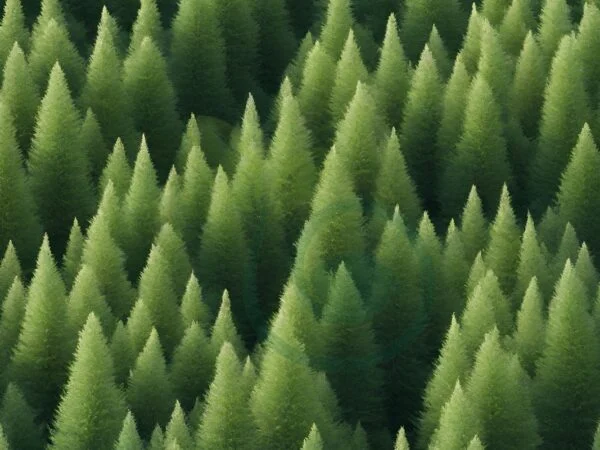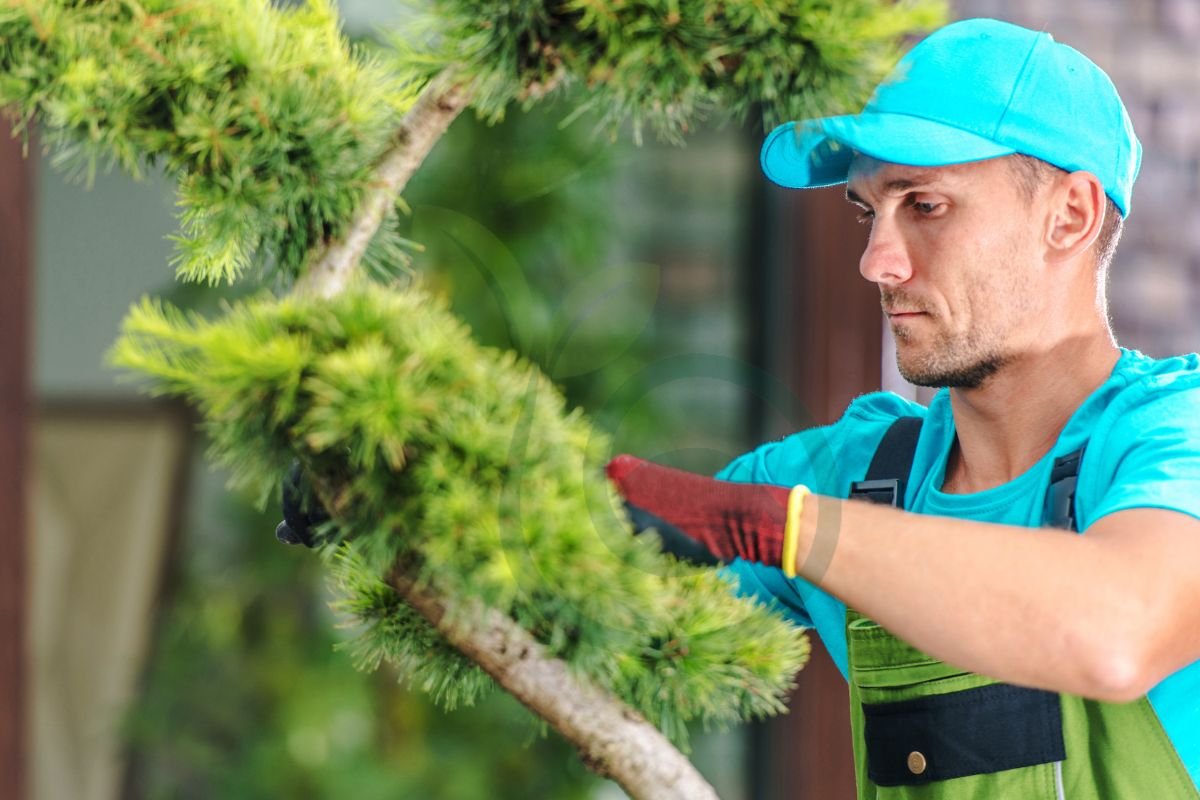
Have you ever wondered if you can cut the buds and limbs of pine trees yourself? It may seem like a bit of a daunting task, but with the right knowledge and tools, pruning pine trees can be a DIY project. Well, the answer is a resounding yes! Pruning pine trees involves cutting limbs and buds, but it's not as daunting as it may seem. With a bit of know-how and the right tools, you can tackle this task with confidence.
We'll cover important topics such as when to prune your pine trees, how to identify dead or diseased limbs that need attention, and the proper techniques for shaping and maintaining their overall health. Additionally, we will discuss how to cut the limbs without harming the tree's buds. In this blog post, we'll discuss the potential benefits of cutting your pine trees. Pruning can help improve their appearance and promote better growth, grabbing attention from passersby.
So if you're ready to take control of cutting your pine tree's maintenance and enhance its beauty, let's dive into the world of pruning together!
Understanding Pine Trees and Pruning
Pine Trees 101
Pine trees are a common sight in many landscapes due to their tall, majestic appearance and evergreen foliage. These trees belong to the Pinus genus and can be found in various species across the world. They are known for their needle-like leaves, which help them conserve water and withstand harsh conditions.
It's essential to understand their growth habits. Unlike deciduous trees that lose their leaves in the fall, pine trees retain their needles year-round. This means that they have a continuous growth cycle throughout the year. Pruning plays a crucial role in maintaining the health and aesthetics of these trees.
Why Prune Pine Trees
There are several reasons why you might consider pruning your pine trees. One primary reason is to promote healthy growth by removing dead or diseased branches. By eliminating these branches, you allow more sunlight and airflow into the tree's canopy, reducing the risk of pests and diseases.
Pruning also helps shape pine trees and maintain a desirable form. You can control their size by selectively removing branches that may be encroaching on structures or obstructing views. Proper pruning techniques can improve the overall structure of the tree, reducing the likelihood of limb breakage during storms or heavy snowfall.
When Pine Trees Need Felling
While pruning is beneficial for most pine trees, there may come a time when felling becomes necessary. Some situations where this might be required include:
- Disease or Pest Infestation: If your pine tree has been severely affected by diseases like pitch canker or pests like bark beetles, it may become irreversibly damaged beyond recovery.
- Structural Instability: In some cases, pine trees may develop structural issues such as multiple trunks or weak branch unions that compromise their stability. If these problems cannot be rectified through pruning or other measures, felling may be the best option.
- Significant Damage: Pine trees that have suffered extensive damage from storms, lightning strikes, or accidents may pose a safety risk and need to be removed.
It's important to note that felling a pine tree should be done by professionals who have the expertise and equipment to handle the task safely. They can assess the tree's condition and determine whether it can be saved through pruning or if removal is necessary.
Preparing to Prune Your Pine Tree
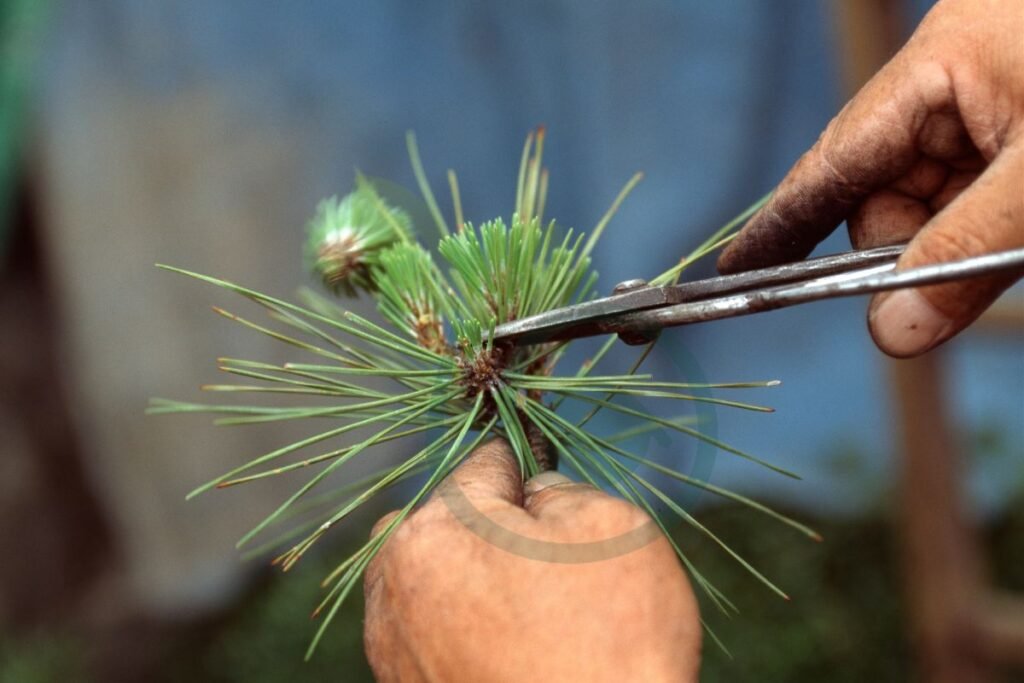
Before you grab those pruning shears and start hacking away at your pine tree, there are a few important steps you need to take. Proper preparation is key to ensuring successful and effective pruning. Let's dive into the essential tasks you should undertake before getting started.
Assessing Tree Health
The first step in preparing to prune your pine tree is assessing its overall health. Take a close look at the tree's branches, needles, and trunk to determine if it's in good condition. Healthy trees have vibrant green needles that are firmly attached to the branches. If you notice any yellow or brown needles, it could be a sign of stress or disease.
Inspect the trunk for any signs of damage or decay. Look for cracks, splits, or peeling bark, as these can indicate underlying issues with the tree's health. If you're unsure about the tree's condition, it may be wise to consult with an arborist who can provide professional guidance.
Identifying Damage and Diseased Areas
Once you've assessed the overall health of your pine tree, it's time to identify any specific areas that require attention. Look for damaged or diseased branches that may pose a risk to the tree's health or safety. Dead branches should be pruned away as they not only detract from the tree's appearance but can also become hazardous if they fall.
Inspect the branches closely for signs of disease such as discoloration, lesions, or abnormal growths. These issues should be addressed promptly to prevent further spread throughout the tree. It may be necessary to remove entire sections of infected branches in severe cases.
Removing Obstacles and Preparing Tools
Before you begin pruning your pine tree, make sure there are no obstacles in your way that could hinder your progress or cause accidents. Clear away any debris or objects near the base of the tree that could trip you up during the pruning process. It's also a good idea to wear protective gear such as gloves and safety glasses to safeguard yourself from potential injuries.
Ensure that your pruning tools are clean, sharp, and in good working condition. Dull or damaged tools can make the pruning process more difficult and may result in uneven cuts that could harm the tree. If necessary, sharpen your shears or loppers before you start.
By taking the time to assess your pine tree's health, identify damaged areas, and prepare your tools properly, you'll be well-equipped to prune your tree effectively. Remember to always prioritize safety and consult with a professional if you're unsure about any aspect of the pruning process.
The Best Time to Prune Pine Trees
Growth Phases and Seasonal Guidance
Pruning pine trees is a crucial task that helps maintain their health and appearance. To ensure successful pruning, it's important to understand the best time to undertake this task. Pine trees have specific growth phases that influence when they should be pruned.
During the dormant season, which typically occurs in late winter or early spring, pine trees are in a period of minimal growth. This makes it an ideal time for pruning. Pruning during this phase allows the tree to allocate its resources efficiently towards healing wounds and developing new growth once the growing season begins.
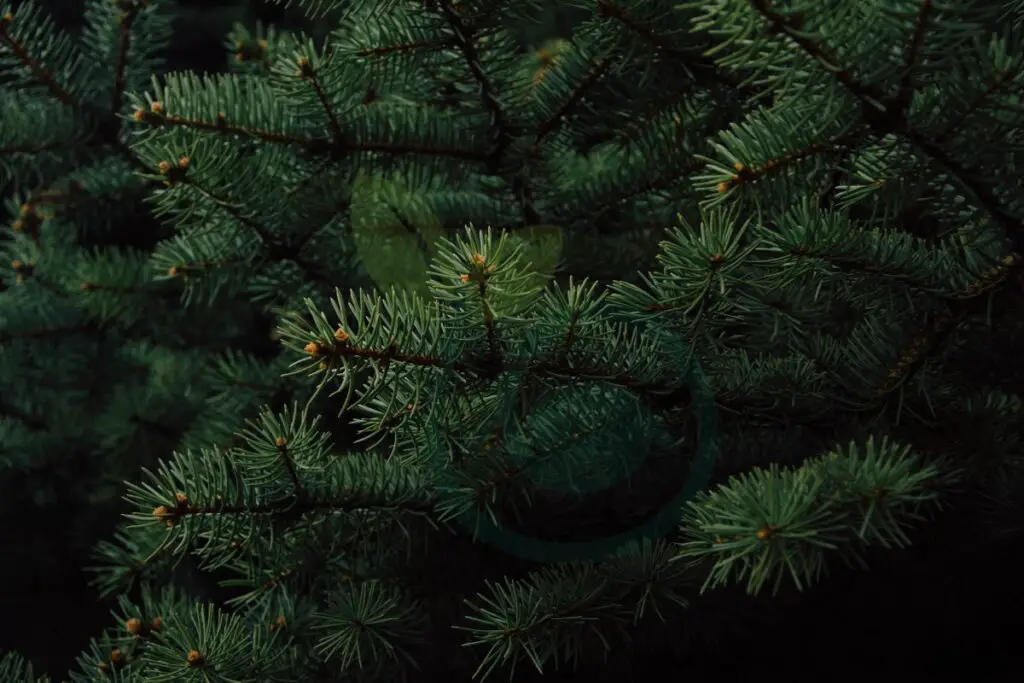
On the other hand, pruning during active growth periods can be detrimental to pine trees. When pines are actively growing, they rely heavily on their foliage for photosynthesis and energy production. Removing branches during this phase can disrupt the tree's ability to generate energy and stunt its overall growth.
As a general rule of thumb, it is best to avoid pruning pine trees in late spring and summer when they are actively growing. Instead, aim to prune them during their dormant phase in late winter or early spring. By following this seasonal guidance, you can minimize stress on your pine tree and promote healthy regrowth.
Special Considerations for Timing
While understanding the general timing for pruning pine trees is essential, there are some special considerations that may affect when you should prune.
Firstly, if you notice any diseased or damaged branches on your pine tree, it is crucial to remove them promptly regardless of the season. Diseased or damaged branches can spread pathogens throughout the tree if left unattended. However, make sure not to remove more than 25% of live foliage at once as it may stress the tree excessively.
Secondly, consider avoiding pruning during extremely cold weather conditions as freezing temperatures can hinder wound healing processes. It's best to wait until temperatures rise above freezing before initiating any pruning activities.
Lastly, keep in mind that different species of pine trees may have slightly different pruning requirements. It's always a good idea to research specific guidelines for the type of pine tree you have or consult with a professional arborist for personalized advice.
How to Prune Pine Trees Successfully
Basic Guide to Cutting and Trimming
Pruning pine trees can seem like a daunting task, but with the right techniques, it can be done successfully.There are a few basic guidelines you should follow. First, make sure you have the proper tools for the job, such as pruning shears or loppers. These will help you effectively remove branches without damaging the tree.
Next, identify which branches need to be pruned. Look for any dead or diseased branches that may be causing harm to the overall health of the tree. It's also important to consider any branches that are crossing or rubbing against each other, as these can create wounds that make the tree more susceptible to pests and diseases.
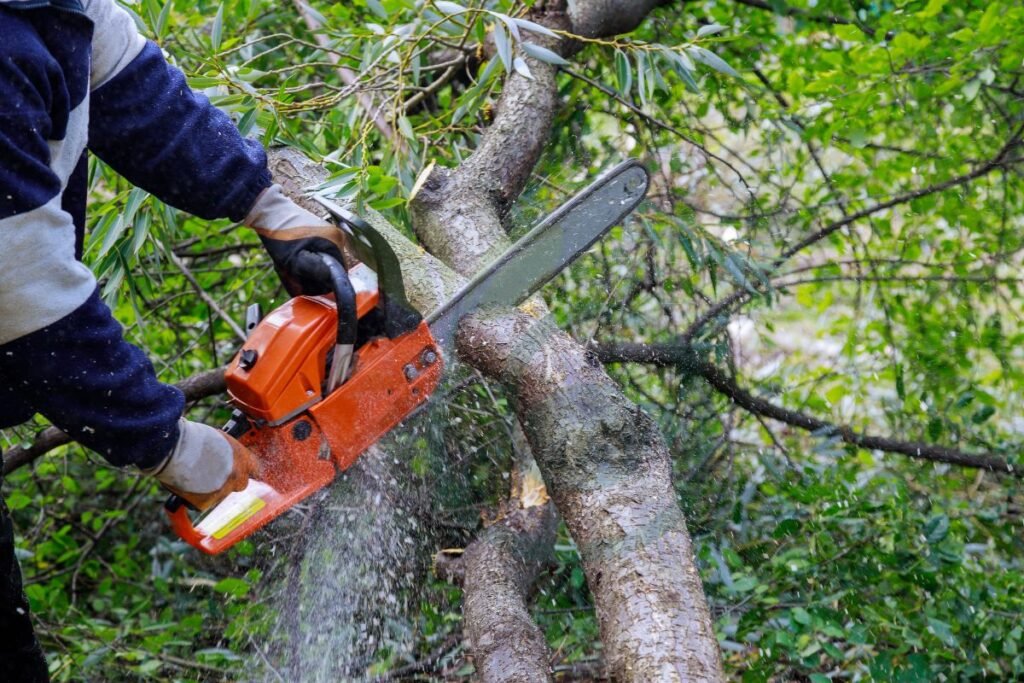
When cutting branches, always prune just outside the branch collar – the swollen area where a branch meets the trunk or another branch. Avoid cutting too close or leaving a stub, as this can lead to decay and weaken the tree. Make clean cuts at a slight angle away from the trunk or branch collar.
Fine Gardening Project Guides
One technique commonly used when pruning pine trees is called "candling." This involves removing some of the new growth on the tips of branches in order to shape and control their growth. To do this, simply snap off or cut back about half of each candle – the soft new shoots at the ends of branches – during springtime before they fully extend.
Another important aspect of pruning pine trees is being aware of branch rubbing. As trees grow and expand, their branches can start rubbing against each other due to wind movement or overcrowding. This friction can cause bark damage and create entry points for pests and diseases. To prevent this issue, carefully remove one of the rubbing branches by cutting it back to its point of origin.
Remember that pruning should only be done during specific times of the year, preferably during late winter or early spring when the tree is dormant. Pruning during this time allows the tree to heal more quickly and reduces stress on the tree.
Candling Explained
Definition and Purpose of Candling
Candling is a technique used in pruning pine trees to promote healthy growth and maintain their overall appearance. The purpose of candling is to remove the new, soft growth at the tips of the branches, known as candles, during specific times of the year. By doing so, it helps control the tree's shape, prevent overcrowding, and encourage better airflow and sunlight penetration.
Step-by-Step Candling Process
- Timing: The best time to perform candling on pine trees is during late spring or early summer when the candles are still soft and pliable.
- Tools: Before you begin, gather your tools - a pair of sharp pruning shears or scissors and protective gloves.
- Identify Candles: Look for the long, green shoots called candles at the ends of each branch. These are usually lighter in color compared to older needles.
- Selective Pruning: Carefully choose which candles to prune based on your desired outcome. If you want a denser tree with more foliage, leave more candles intact. For a more open appearance with increased airflow, remove more candles.
- Cut Technique: Hold the candle gently between your fingers and make a clean cut just above where the new growth begins but below any mature needles or branches.
- Branch Lengths: Take into consideration that shorter branches will produce denser foliage while longer branches will result in a more open structure.
- Safety Measures: Wear protective gloves during candling as some pine species can have sharp needles that may cause skin irritation or injury.
- Clean Up: Dispose of the pruned candles properly by collecting them in a bag or container for disposal.
- Post-Candling Care: After candling, monitor your pine tree's growth regularly and provide appropriate care such as watering and fertilizing if needed.
Candling can be an effective way to maintain the health and appearance of your pine trees. By selectively pruning the candles, you can control their growth, prevent overcrowding, and ensure better air circulation and sunlight exposure. However, it's essential to remember that candling should be done with caution and knowledge of the specific type of pine tree you have. Different pine species may require different pruning techniques or timing.
Common Mistakes to Avoid While Pruning
Improper Cutting Techniques
Using improper cutting techniques can have detrimental effects on the health and appearance of the tree. One common mistake is making cuts too close to the trunk or main branches. This can lead to damage and decay, as it exposes the tree to potential infections and pests. It's important to remember that trees have a natural defense mechanism, known as compartmentalization, which helps them heal wounds. By cutting too close, we hinder this process and put the tree at risk.

Another mistake people often make is using dull or improper tools for pruning. A clean cut is crucial for the tree's recovery and growth. Using dull tools can result in jagged cuts that take longer to heal. It's essential to use sharp, clean pruning shears or saws specifically designed for tree pruning. This ensures smooth cuts that promote faster healing and minimize stress on the tree.
Over-Pruning and Its Consequences
Over-pruning is a common mistake that many people make when attempting to shape their pine trees. It involves removing an excessive amount of foliage and branches, leaving the tree looking bare and unbalanced. While some pruning is necessary for maintaining the health of the tree, overdoing it can have negative consequences.
One consequence of over-pruning is reduced photosynthesis. Pine trees rely on their needles for energy production through photosynthesis. When too many needles are removed, the tree may not be able to produce enough energy to sustain its growth and overall health.
Over-pruning also increases the vulnerability of pine trees to environmental stressors such as extreme temperatures or drought conditions. The loss of foliage can leave the tree more exposed, making it harder for it to withstand harsh weather conditions.
Over-pruned pine trees are more susceptible to diseases and pests. The removal of excessive foliage weakens their natural defense mechanisms, making them more susceptible to infections and infestations. It's important to strike a balance between pruning for aesthetic purposes and maintaining the tree's health.
Post-Pruning Care for Pine Trees
After successfully pruning your pine trees, it's crucial to provide proper post-pruning care to ensure their health and encourage healthy regrowth. Let's explore some essential maintenance practices and steps you can take to promote the well-being of your pruned pines.
Maintenance of Pruned Pines
Once you've completed the pruning process, it's important to remove any debris or fallen branches from around the tree. This helps prevent potential hazards and allows for better air circulation. Clearing away debris reduces the risk of pests and diseases that might affect the tree's overall health.
Regularly inspecting your pruned pine trees is another vital aspect of maintenance. Keep an eye out for signs of stress or disease, such as discoloration, wilting foliage, or unusual growth patterns. If you notice any concerning symptoms, consult with a professional arborist who can provide expert guidance on how to address these issues effectively.
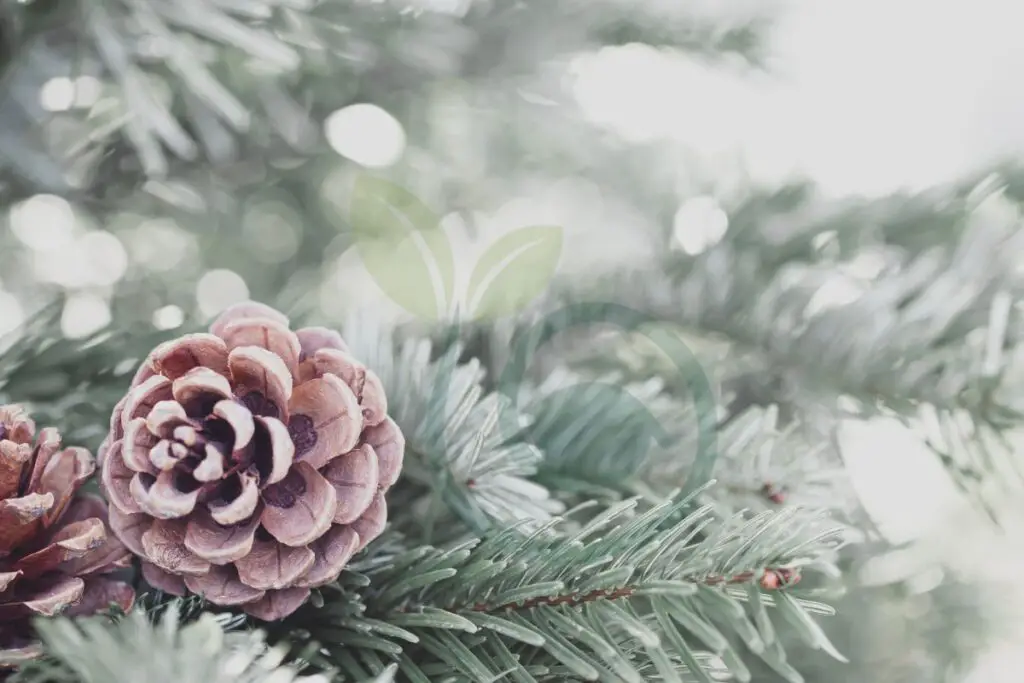
Watering is key. While established pine trees are generally drought-tolerant, newly pruned ones may require extra moisture during their recovery phase. Make sure to water deeply but infrequently, allowing the soil around the tree to dry out between watering sessions. This encourages deep root growth and helps prevent shallow root development.
Applying a layer of mulch around the base of your pruned pine trees offers several benefits. Mulch helps retain moisture in the soil, regulates temperature fluctuations, suppresses weed growth, and adds organic matter as it decomposes over time. Be mindful not to pile mulch directly against the trunk; instead, create a donut-shaped ring about three inches away from the base.
Ensuring Healthy Regrowth
To promote healthy regrowth after pruning your pine trees, consider applying a slow-release fertilizer specifically formulated for evergreens. The nutrients in such fertilizers support the tree's recovery and encourage new growth. However, be cautious not to over-fertilize, as this can lead to excessive foliage growth at the expense of root development.
Pruning stimulates new growth, so it's important to monitor and shape the regrowth as needed. Remove any weak or crossing branches that may hinder the tree's structure or cause rubbing and damage. By selectively pruning these unwanted branches, you allow for better airflow and light penetration within the canopy, promoting overall tree health.
Regularly inspecting your pruned pine trees is another vital aspect of maintenance. Keep an eye out for signs of stress or disease, such as discoloration, wilting foliage, or unusual growth patterns.
Recognizing the Need for Professional Help
Signs You Should Call an Expert
Sometimes,It's best to leave it to the professionals. But how do you know when it's time to call in the experts? Here are some signs that indicate you should reach out for professional help:
- Lack of Experience: If you've never pruned a pine tree before or don't have much experience with tree care in general, it's best to consult a professional. Tree pruning requires knowledge of proper techniques and an understanding of how different species respond to pruning. Without this expertise, you risk damaging the tree or promoting unhealthy growth.
- Tree Size and Height: Pruning large pine trees can be dangerous and challenging without the right equipment and training. If your pine tree is tall or has significant branches that need attention, it's wise to hire professionals who have the necessary tools and expertise to handle the job safely.
- Overgrown or Unhealthy Appearance: If your pine tree looks overgrown, has dead or diseased branches, or appears generally unhealthy, calling in a professional arborist is essential. They can assess the tree's condition and determine the appropriate pruning methods needed to restore its health and appearance.
- Structural Issues: Pine trees with structural issues such as crossed branches, weak attachments, or co-dominant leaders require specialized pruning techniques that only professionals can provide. These issues can compromise the stability of the tree and pose a safety hazard if not addressed correctly.
- Proximity to Power Lines or Structures: Pruning near power lines or structures requires careful planning and adherence to safety regulations. Professionals are trained in working around these obstacles while minimizing risks associated with electrical hazards or property damage.
Evaluating Expertise for Your Pine Tree
When hiring a professional for pruning your pine tree, there are several factors you should consider:
- Certifications and Qualifications: Look for arborists who are certified by reputable organizations such as the International Society of Arboriculture (ISA). Certification ensures that the individual has undergone rigorous training and possesses the necessary knowledge and skills to care for trees properly.
- Experience and Reputation: Inquire about the professional's experience in pruning pine trees specifically. Ask for references or read online reviews to get a sense of their reputation within the community. A well-established professional with a positive track record is more likely to deliver satisfactory results.
- Insurance Coverage: Ensure that the professional you hire carries liability insurance. This coverage protects you from any potential damages or injuries that may occur during the pruning process.
- Written Estimates
Additional Tips for Pruning and Maintenance
Top Tips on Caring for Evergreens
Caring for evergreen trees, including pine trees, requires some additional tips to ensure their health and longevity. Here are a few key pointers to keep in mind:
- Timing is crucial: Timing is everything. It's best to prune during the dormant season, which is typically late winter or early spring before new growth begins. This allows the tree to recover quickly and minimizes stress on the tree.
- Know your cuts: Understanding different types of cuts is essential when pruning pine trees. Start by removing any dead, damaged, or diseased branches with clean cuts close to the main trunk or branch collar. Avoid leaving stubs as they can become entry points for pests and diseases.
- Mind the leader branch: The leader branch is the central stem that determines the tree's vertical growth. It's crucial to maintain its upward growth by avoiding excessive pruning or cutting it off entirely. Trimming only side branches that compete with the leader branch will help maintain a strong and balanced structure.
- Maintain proper spacing: Adequate spacing between branches is vital for good air circulation and sunlight penetration within the tree canopy. Remove any overcrowded or crossing branches that hinder healthy growth and promote disease development.
- Be mindful of height control: If you want to manage the height of your pine tree, consider using a technique called "candling." This involves selectively pruning terminal buds in spring when they are still soft and pliable, promoting lateral bud growth instead of vertical extension.
Dealing with Storm or Human Damage
Sometimes unforeseen circumstances like storms or human damage can cause harm to your pine trees. Here's what you can do:
- Assess the damage: After a storm or incident of human damage occurs, carefully assess the extent of the damage to your pine tree. Look for broken branches, split trunks, or uprooted trees. If the damage is severe or poses a safety risk, it's best to consult a professional arborist.
- Immediate action: For minor damage like broken branches, remove them promptly to prevent further injury or infection. Make clean cuts just outside the branch collar using sharp pruning tools. This will help the tree heal more effectively and minimize the risk of disease.
- Support for leaning trees: If your pine tree has become tilted or leaning due to storm damage, you may need to provide temporary support until it can regain its stability. Use stakes and ties to secure the tree in an upright position without causing further harm.
- Preventive measures:
Conclusion
Congratulations! You now have the knowledge and confidence to successfully prune your pine trees. By understanding the biology of pine trees and following the proper techniques, you can ensure the health and vitality of your trees while maintaining their aesthetic appeal. Remember to prepare adequately, prune during the appropriate time, and be mindful of common mistakes to avoid. Don't forget about post-pruning care and when to seek professional help.
Now it's time to put your newfound skills into action! Grab your pruning tools and get ready to transform your pine trees into works of art. Take a step back and admire the beauty you've created, knowing that you've played a crucial role in their growth and longevity. Enjoy the benefits of a well-maintained landscape, and don't hesitate to share your success with others. Happy pruning!
FAQs
Can you prune pine trees?
Yes, you can prune pine trees. Pruning helps maintain the tree's health, shape, and size. It involves removing dead or diseased branches, improving air circulation, and promoting new growth. However, it's important to follow proper pruning techniques to avoid damaging the tree.
When is the best time to prune pine trees?
The best time to prune pine trees is during late winter or early spring when they are dormant. Pruning during this period minimizes stress on the tree and allows it to heal before new growth begins. Avoid pruning in late summer or fall as it may attract pests or diseases.
How much should I prune off a pine tree?
When pruning a pine tree, it's recommended to remove no more than one-third of its total foliage in a single year. Removing excessive foliage can weaken the tree and hinder its ability to produce energy through photosynthesis. Always aim for selective pruning rather than heavy removal.
What tools do I need for pruning pine trees?
To effectively prune pine trees, you'll need a few essential tools:
- Loppers for thicker branches that are out of reach.
- Hand pruners for cutting small branches.
- Pruning saw for larger limbs.
- Pole pruner with an extendable handle for high branches.
Can I prune my own pine trees or should I hire a professional?
Pruning smaller-sized pine trees can be done by homeowners with some knowledge and caution. However, if you have large or mature pines that require extensive pruning or are located near power lines, it's advisable to hire a professional arborist who has experience in working with tall trees.
Image Source: Paid image from CANVA


